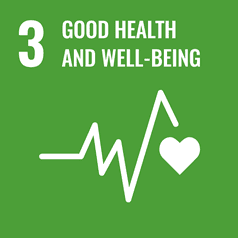| 2026 |
Felkai C, Carew JL, Newby D, Cooper J, Croft H, 'Common ailment and non-prescription medication-related problems faced by people with intellectual disability: Findings from medication reviews provided by pharmacists', Research in Social and Administrative Pharmacy, 22, 128-134 (2026) [C1]
|
|
|
| 2025 |
Hooper AD, Marquez J, Bajorek B, Cooper J, Newby D, 'Understanding pharmacists' engagement in sport and exercise medicine, including pharmacist-physiotherapist collaboration: A qualitative study and COM-B analysis.', Exploratory Research in Clinical and Social Pharmacy, 18 (2025) [C1]
Background: Sport and exercise medicine (SEM) is a multidisciplinary field that integrates expertise from various healthcare professionals to optimise athletic performa... [more]
Background: Sport and exercise medicine (SEM) is a multidisciplinary field that integrates expertise from various healthcare professionals to optimise athletic performance and promote physical activity for chronic disease prevention and management. Australian pharmacists are well-positioned to contribute to SEM, yet their roles remain undefined beyond niche areas like anti-doping. Interdisciplinary collaboration, particularly with physiotherapists, is also underexplored. This study investigates pharmacists' engagement in SEM and pharmacist-physiotherapist collaboration, using the Capability, Opportunity, Motivation¿Behaviour (COM[sbnd]B) model to explore behavioural components. Methods: A qualitative study was conducted using semi-structured interviews with 14 Australian pharmacists practicing across diverse settings. Data were thematically analysed and mapped to the COM-B framework. Results: Five key themes emerged: (1) Broad scope of pharmacy practice in SEM incorporating both pharmacological and non-pharmacological advice; (2) Opportunities and challenges in inter-professional collaboration, constrained by informal referral pathways and limited interdisciplinary communication (3) Gaps in SEM-related training and education, with pharmacists expressing interest in targeted professional development; (4) Perceived barriers to engagement, including time constraints, remuneration issues and lack of professional recognition; and (5) Future opportunities for pharmacists in SEM, such as integration into multidisciplinary SEM teams and supporting physiotherapist prescribing. Conclusions: Pharmacists are well-placed to play a broader role in SEM but face systemic and educational barriers. Enhancing training, establishing formal referral and interdisciplinary communication pathways and addressing structural challenges could improve engagement. This study lays the groundwork for future interventions to enhance pharmacists' contributions to SEM and strengthen pharmacist-physiotherapist collaboration, ultimately improving consumer care and health outcomes.
|
|
|
| 2025 |
Hooper AD, Marquez J, Bajorek B, Cooper JM, Newby D, 'Enhancing pharmacists' engagement and collaboration in sport and exercise medicine: An intervention mapping study using the behaviour change wheel', Exploratory Research in Clinical and Social Pharmacy, 19 (2025) [C1]
|
|
Open Research Newcastle |
| 2025 |
Johnstone K, Cooper J, Smithson J, Glass B, 'Perspectives of healthcare professionals on the pharmacist’s role in delivering vaccinations for patients with cancer: a qualitative study using role theory', International Journal of Clinical Pharmacy (2025) [C1]
|
|
|
| 2025 |
Johnstone K, Cooper J, Smithson J, Glass B, 'Multidisciplinary perspective on a pharmacist-led vaccination clinic in a regional cancer care setting: A qualitative study', Exploratory Research in Clinical and Social Pharmacy, 19 (2025) [C1]
|
|
|
| 2025 |
Johnstone K, Smithson J, Cooper J, Glass B, 'Scoping the barriers to influenza and pneumococcal vaccinations from the perspectives of patients with cancer: is there a role for the pharmacist?', Journal of Pharmacy Practice and Research, 55, 1-15 (2025) [C1]
Background: Routine immunisation for influenza and pneumococcal disease has the potential to reduce morbidity and mortality in patients with cancer. Aim: This scoping r... [more]
Background: Routine immunisation for influenza and pneumococcal disease has the potential to reduce morbidity and mortality in patients with cancer. Aim: This scoping review aims to determine barriers to influenza and pneumococcal vaccinations from the perspective of patients with cancer and to discuss the potential role of the pharmacist in impacting these barriers. Design: A systematic search of seven databases, including MEDLINE (Ovid), Cochrane Library, Informit (health), PubMed, and CINAHL (complete), from database inception to 6 June 2023 was conducted. Search terms included: 'cancer', 'vaccination', 'influenza', 'pneumococcal', and 'barrier'. Articles published in English that describe barriers to receiving vaccinations from the perspectives of patients with cancers were included. Barriers were thematically analysed. Results: Twenty-five articles met the inclusion criteria. Barriers identified in the literature were analysed into three key themes: healthcare professionals, patients, and healthcare system barriers. A key healthcare professional barrier was lack of recommendations from the treating oncologist or haematologist. Patient barriers included lack of information about the indication for vaccination as part of patients' cancer treatment and fear of side effects. Access to vaccination services was reported as a healthcare system barrier. Conclusion: This scoping review highlights the significant barriers to influenza and pneumococcal vaccination according to patients with cancer. Healthcare professionals, patients, and health systems were identified as key barriers. Enablers to improve vaccination rates include patient education, increased healthcare professional vaccine recommendations, and improved access. Although pharmacists have a potential role to play in addressing these barriers, the feasibility and impact of their involvement requires further research.
|
|
|
| 2025 |
Johnstone K, Cooper J, Mylrea M, Smithson J, Glass B, 'Perspectives of patients with cancer on influenza and pneumococcal vaccinations in an oncology setting: Is there a role for pharmacists?', Journal of Oncology Pharmacy Practice (2025) [C1]
|
|
|
| 2024 |
Docherty T, David M, Schneider J, O'Kane G, Morris J, Paavola C, Sawers J, O'Mahony D, Cooper J, 'Antibiotics administered as continuous intravenous infusion over 24 hours by elastomeric devices to patients treated at home: a study of infusion efficiency', JOURNAL OF PHARMACY PRACTICE AND RESEARCH, 54, 242-251 (2024) [C1]
Background: Elastomeric infusion devices or 'Infusors' are commonly used to administer 24-h continuous intravenous infusions to hospital patients at home, a s... [more]
Background: Elastomeric infusion devices or 'Infusors' are commonly used to administer 24-h continuous intravenous infusions to hospital patients at home, a service which can increase hospital capacity. Aim: This study sought to determine Infusor efficiency by measuring infusion lengths administered by Infusors to patients in the community setting and reviewing any impacting factors on varying infusion rates, if observed. Method: Patients and nurses completed data collection forms daily over a 12-month period. The following information was recorded: time Infusor attached to patient, time Infusor emptied, Infusor 'empty' or 'not empty' when removed, volume of antibiotic solution remaining, Infusor storage details, antibiotic solution and dose, indication for treatment, and date (season). Statistical analyses was conducted using Stata. Data were analysed using descriptive statistics, including median and range for continuous variables, and frequency counts and percentages for categorical variables. Ethical approval was granted by Northern Sydney Local Health District (NSLHD) Research Office (Reference no: RESP/14/184), the Human Research Ethics Committee (HREC) (Reference no: LNR/14/HAWKE/265) and the study conforms to the Australian National Statement on Ethical Conduct in Human Research. Informed consent was obtained from all participants via a study information leaflet that was provided with the patient questionnaire and patients were informed that their participation in the study was optional. Patients indicated their consent by completing the data collection form for each day of treatment. Results: A significant number of Infusors (27%) emptied outside the expected infusion duration of 24 h ± 10% (21.6¿26.4 h) and Infusors were removed 'not empty' when the nurse visited >24 h on 35% of occasions. Infusors were more likely to empty >24 h if they contained piperacillin-tazobactam 13.5 g (predicted probability = 1.0), in winter (predicted probability = 0.83), and in cooler overnight storage locations (predicted probability = 0.64). Infusors were more likely to empty <24 h if they contained vancomycin (predicted probability = 0.12). Conclusion: Infusors delivering 24-h continuous intravenous infusions in the home setting may empty at unpredictable times and may be affected by temperature or solutions with varying doses. Outpatient parenteral antimicrobial therapy clinicians should be aware of possible unfinished infusions from Infusors.
|
|
Open Research Newcastle |
| 2024 |
Bennetts J, White J, Croft H, Cooper J, McIvor D, Eadie N, Appay M, Sverdlov AL, Ngo D, 'Pharmacist-led medication management services: a qualitative exploration of transition-of-care cardiovascular disease patient experiences', BMJ OPEN, 14 (2024) [C1]
|
|
Open Research Newcastle |
| 2024 |
Felkai C, Newby D, Cooper J, Nielsen S, Reeves A, Croft H, 'Medication management issues perceived by pharmacists and disability caregivers while supporting people with disability', EXPLORATORY RESEARCH IN CLINICAL AND SOCIAL PHARMACY, 15 (2024) [C1]
Background: Australia has a notable gap in guidance for pharmacists, caregivers and disability service providers in: (i) supporting people with disabilities (PWD) withi... [more]
Background: Australia has a notable gap in guidance for pharmacists, caregivers and disability service providers in: (i) supporting people with disabilities (PWD) within the medication management cycle, (ii) understanding their obligations for providing high quality care, and (iii) preventing medication-related harm. Objective: The objective of this study was to identify medication management issues for PWD from the perspective of disability caregivers and pharmacists when supporting PWD with their medication. Methods: A qualitative study design using semi-structured interviews of pharmacists and disability caregivers was undertaken across six different states or territories in Australia. Results: Interviews were conducted with registered pharmacist participants (n=10), and disability workers (n=10). Seven themes emerged for both pharmacists and caregivers, with most sub-themes and codes concordant between the two cohorts. Clinical issues, particularly related to polypharmacy and psychotropic use; confidence in providing medicines and medication information accurately to PWD; practical and behavioural issues caregivers experienced when administering medication; challenges in providing individualised and person-centred care to PWD; inadequate communication and transfer of information between healthcare professionals, caregivers, and PWD; insufficient disability awareness training for pharmacists and medication training for caregivers; and challenges working with provider organisations within the current practice environment were described. Conclusions: This study highlighted seven areas where issues were perceived to arise in medication management for PWD. By understanding the issues perceived by those directly providing care, it may be possible to improve medication management. Further research is needed to understand the perceived role of pharmacists in supporting medication management for PWD and their caregivers, and how enabling pharmacists scope might reduce medication-related risks and support QUM in this sector.
|
|
Open Research Newcastle |
| 2023 |
Cooper J, Duffull SB, Isbister GK, 'Predicting serotonin toxicity in serotonin reuptake inhibitor overdose', CLINICAL TOXICOLOGY, 61, 22-28 (2023) [C1]
|
|
Open Research Newcastle |
| 2022 |
Isbister GK, Polanski R, Cooper JM, Keegan M, Isoardi KZ, 'Duloxetine overdose causes sympathomimetic and serotonin toxicity without major complications', CLINICAL TOXICOLOGY, 60, 1019-1023 (2022) [C1]
|
|
Open Research Newcastle |
| 2020 |
Salem S, Cooper J, Schneider J, Croft H, Munro I, 'Student Acceptance of Using Augmented Reality Applications for Learning in Pharmacy: A Pilot Study.', Pharmacy (Basel, Switzerland), 8, 1-10 (2020) [C1]
|
|
Open Research Newcastle |
| 2020 |
Docherty T, Schneider JJ, Cooper J, 'Clinic- and Hospital-Based Home Care, Outpatient Parenteral Antimicrobial Therapy (OPAT) and the Evolving Clinical Responsibilities of the Pharmacist.', Pharmacy (Basel, Switzerland), 8 (2020) [C1]
|
|
Open Research Newcastle |
| 2019 |
Felkai C, Swinburne G, Cooper J, Kairuz T, 'Opioid pharmacotherapy: delivery in community pharmacy', Australian Pharmacist, 38 76-80 (2019)
|
|
|
| 2019 |
Hooper AD, Cooper JM, Schneider J, Kairuz T, 'Current and Potential Roles in Sports Pharmacy: A Systematic Review', PHARMACY, 7 (2019) [C1]
|
|
Open Research Newcastle |
| 2019 |
Bevan M, Ng YC, Cooper J, Robertson J, Walkom E, Chiu S, Newby DA, 'The role of evidence in consumer choice of non-prescription medicines', INTERNATIONAL JOURNAL OF PHARMACY PRACTICE, 27, 501-509 (2019) [C1]
Objectives: To identify factors influencing Australian consumer decision-making and attitudes towards non-prescription medicine (NPM) purchases, pharmacy's role in... [more]
Objectives: To identify factors influencing Australian consumer decision-making and attitudes towards non-prescription medicine (NPM) purchases, pharmacy's role in providing these medications and views around sources of evidence for effectiveness of these products. Methods: Cross-sectional survey of a general population sample of 1731 adults using an Australian online consumer panel stratified by gender, age and location (State/Territory). Beliefs about NPM purchases and evidence of their efficacy were assessed using a 5-point Likert scale (strongly disagree-strongly agree). Non-parametric measures (Ridit analysis and Mann¿Whitney U-test) were used to explore associations between responses and previous experience with medicines. Key findings: The most important factors when purchasing NPMs were effectiveness and safety. However, personal experience was the most common method of determining effectiveness. Most respondents believed buying NPMs in pharmacies gave access to advice, but were less likely to agree that pharmacies were associated with safe and effective treatments. Around half the respondents agreed that it is wrong to sell treatments lacking scientific evidence; many also agreed that it is up to consumers to decide what they want even without scientific evidence. Individuals experiencing an ineffective NPM were less likely to trust scientific evidence of efficacy as the sole source of effectiveness information; regular prescription medicine users often agreed that scientific evidence is needed to support effectiveness. Conclusions: Consumers have conflicting views regarding the need for scientific evidence and the desire for patient autonomy in NPM purchases. This presents a challenge for pharmacists wishing to maintain professional obligations to provide evidence-based treatments to consumers.
|
|
Open Research Newcastle |
| 2018 |
Tait L, Lee K, Rasiah R, Cooper JM, Ling T, Geelan B, Bindoff I, 'Simulation and Feedback in Health Education: A Mixed Methods Study Comparing Three Simulation Modalities.', Pharmacy (Basel, Switzerland), 6 (2018) [C1]
|
|
Open Research Newcastle |
| 2017 |
Cooper JM, Brown JA, Cairns R, Isbister GK, 'Desvenlafaxine overdose and the occurrence of serotonin toxicity, seizures and cardiovascular effects', CLINICAL TOXICOLOGY, 55, 18-24 (2017) [C1]
Context: Desvenlafaxine is used to treat major depression. Desvenlafaxine is also the active metabolite of venlafaxine. Venlafaxine overdose can cause serotonin toxicit... [more]
Context: Desvenlafaxine is used to treat major depression. Desvenlafaxine is also the active metabolite of venlafaxine. Venlafaxine overdose can cause serotonin toxicity, seizures and cardiovascular effects, but there is limited information on desvenlafaxine overdose. Objective: We aimed at investigating the clinical effects and complications from desvenlafaxine overdose. Materials and methods: This was a retrospective observational study of desvenlafaxine overdoses over a six-year period. Demographic details, dose and timing of the overdose, together with clinical effects, treatment and complications were extracted from a local hospital network database or the medical records of patients following hospital admission with a desvenlafaxine overdose. Results: There were 182 cases of desvenlafaxine overdose included in the study. From the 182 cases, 75 were desvenlafaxine (± alcohol) only ingestions and 107 included one or more co-ingested drugs. In single-agent desvenlafaxine ingestions, median age was 25 years (range: 13¿68 years) with a median ingested dose of 800 mg (range: 250¿3500 mg; interquartile range (IQR): 600¿1400 mg), and 54/75 (72%) were female. The Glasgow Coma Score (GCS) was 15 in 68/74 (92%) patients, 13¿14 in 5/74 (7%), and was seven in one patient following aspiration. Mild hypertension (systolic blood pressure [BP] > 140¿180 mmHg) occurred in 23/71 patients (32%), and tachycardia occurred in 29/74 (39%) patients. There were no abnormal QT intervals and no QRS >120 m s. Serotonin toxicity was diagnosed by the treating physician in 7/75 (9%) patients, but only one of these met the Hunter Serotonin Toxicity Criteria. None of the 75 patients who took desvenlafaxine only (± alcohol) had seizures, were admitted to intensive care or died. In comparison, the 107 patients taking desvenlafaxine in overdose with other medications developed more pronounced toxicity. Generalised seizures occurred in 5/107 (5%), but in three of these cases co-ingestants were possible proconvulsants. Fifteen patients had a GCS =9 and none had an abnormal QT or QRS. Severe effects appeared to be associated with coingestants. Conclusion: Desvenlafaxine overdose causes minor effects with mild hypertension and tachycardia. The risk of seizures or serotonin toxicity is low.
|
|
Open Research Newcastle |
| 2016 |
Isbister GK, Ang K, Gorman K, Cooper J, Mostafa A, Roberts MS, 'Zero-order metoprolol pharmacokinetics after therapeutic doses: severe toxicity and cardiogenic shock', CLINICAL TOXICOLOGY, 54, 881-885 (2016)
|
|
|
| 2015 |
Michael AP, Mostafa A, Cooper JM, Grice J, Roberts MS, Isbister GK, 'Erratum: The pharmacokinetics and pharmacodynamics of severe aldicarb toxicity after overdose (Clinical Toxicology (2015) (1-3))', Clinical Toxicology, 53 788 (2015) [O1]
|
|
|
| 2015 |
Cooper JM, Duffull SB, Saiao AS, Isbister GK, 'The pharmacokinetics of sertraline in overdose and the effect of activated charcoal', BRITISH JOURNAL OF CLINICAL PHARMACOLOGY, 79, 307-315 (2015) [C1]
Aims To investigate the pharmacokinetics (PK) of sertraline in overdose and the effect of single dose activated charcoal (SDAC). Methods Patients presenting to a toxico... [more]
Aims To investigate the pharmacokinetics (PK) of sertraline in overdose and the effect of single dose activated charcoal (SDAC). Methods Patients presenting to a toxicology unit with sertraline overdoses had demographic and clinical information recorded, and serial serum collected for measurement of sertraline concentrations. Monolix® version 4.2 was used to develop a population PK model of sertraline overdose and the effect of SDAC. Uncertainty in dose time was accounted for by shifting dose time using lag time with between subject variability (BSV). BSV on relative fraction absorbed was used to model uncertainty in dose. Results There were 77 timed sertraline concentrations measured in 28 patients with sertraline overdoses with a median dose of 1550 mg (250-5000 mg). SDAC was given to seven patients between 1.5 and 4 h post-overdose. A one compartment model with lag time of 1 h and first order input and elimination adequately described the data. Including BSV on both lag time and relative fraction absorbed improved the model. The population PK parameter estimates for absorption rate constant, volume of distribution and clearance were 0.895 h-1, 5340 l and 130 l h-1, respectively. The calculated half-life of sertraline following overdose was 28 h (IQR 19.4-30.6h). When given up to 4 h post-overdose, SDAC significantly increased the clearance of sertraline by a factor of 1.9, decreased the area under the curve and decreased the maximum plasma concentration (Cmax). Conclusions Sertraline had linear kinetics in overdose with parameter values similar to those in therapeutic use. SDAC is effective in increasing clearance when given 1.5 to 4 h post-overdose.
|
|
Open Research Newcastle |
| 2015 |
Michael AP, Mostafa A, Cooper J, Grice J, Roberts MS, Isbister GK, 'The pharmacokinetics and pharmacodynamics of severe aldicarb toxicity after overdose', CLINICAL TOXICOLOGY, 53, 633-635 (2015) [C1]
Objective. To describe the clinical effects, pharmacokinetics, and pharmacodynamics of plasma and acetylcholinesterase in an aldicarb overdose. Case Report. A 57-year-o... [more]
Objective. To describe the clinical effects, pharmacokinetics, and pharmacodynamics of plasma and acetylcholinesterase in an aldicarb overdose. Case Report. A 57-year-old female was found unconscious and incontinent of urine after ingesting aldicarb. She was bradycardic, hypotensive, hypersalivating, clammy, had small pupils, and generalized weakness. She was intubated, ventilated, and treated with large atropine doses (50 mg and 20 mg/h infusion) and adrenaline. She improved hemodynamically over 24 h, but remained comatose for another 24 h, before recovering without sequela. Aldicarb concentration at admission was 2.18 µg/ml and concentration-time data best fitted a two compartmental model with first order absorption and a time of ingestion 4.5 h preadmission. The half-life of distribution was 0.4 h and half-life of elimination, 13 h. Plasma cholinesterase concentration at admission was 0.3 kU/L (Reference range[RR]:4.3-10.6 kU/L) and red cell cholinesterase was 10 U/gHb (RR:38-66 U/gHb). The IC50 was 0.15 µg/ml and 0.26 µg/ml for plasma and red cell cholinesterase, respectively. Discussion. Aldicarb poisoning causes rapid onset severe toxicity with muscarinic and nicotinic excess, seizures, and decreased consciousness. Cholinesterases rapidly recover once aldicarb concentrations decrease and precede clinical recovery.
|
|
Open Research Newcastle |
| 2014 |
Cooper J, Garrett T, 'Providing medicines information and education to hospital in-patients: patients' experiences and preferences', Journal of Pharmacy Practice and Research, 44 213-219 (2014) [C1]
|
|
Open Research Newcastle |
| 2014 |
Cooper JM, Newby DA, Whyte IM, Carter G, Jones AL, Isbister GK, 'Serotonin toxicity from antidepressant overdose and its association with the T102C polymorphism of the 5-HT receptor', Pharmacogenomics J (2014) [C1]
|
|
Open Research Newcastle |
| 2014 |
Cooper J, Hookham G, Nesbitt KV, Rasiah RL, 'Developing a Virtual Tour of a Community Pharmacy for use in Education', IT in Industry, 2, 33-37 (2014) [C1]
|
|
Open Research Newcastle |
| 2011 |
Gilligan C, Outram S, Rasiah RL, Cooper J, 'Exploring the attitudes of pharmacy students to clinical communications training', Focus on Health Professional Education, 13, 25-36 (2011) [C1]
|
|
Open Research Newcastle |
| 2009 |
Cooper J, Jones AL, 'Neuroleptic malignant syndrome or a statin drug reaction? A case report', Clinical Neuropharmacology, 32, 348-349 (2009) [C3]
|
|
Open Research Newcastle |




